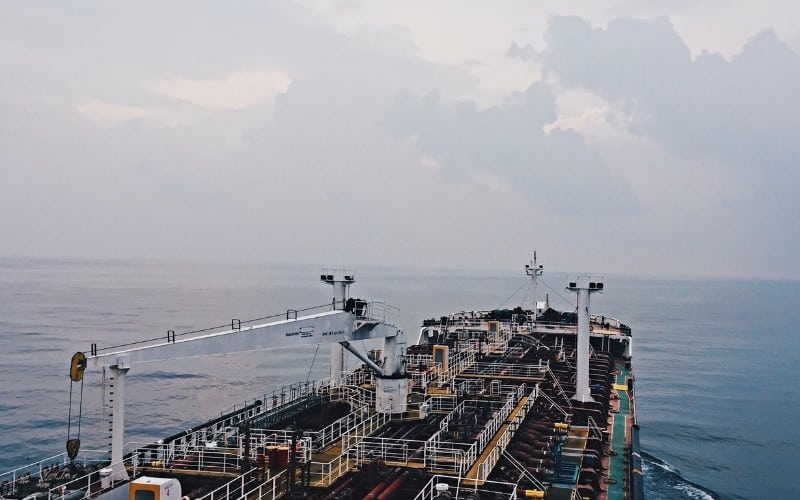

Merchant ships are categorised on the basis of the cargo they carry. The two basic pool of cargo ships are – 1. dry ships, comprising of container ships, general cargo ships, bulk carrier ships etc., and 2. tanker ships or wet ships such as oil tanker, chemical tanker, gas carriers etc., which carry cargo of hazardous nature in liquid, vapour or solid form.
The cargo carried in later type of the ship i.e. tankers is much more hazardous and reactive than that carried by dry ship. It’s therefore very important that the tanks which carry such cargo are of approved types and as per the requirements of different safety codes such as – IGC, IBC, IMDG etc.


The atmosphere inside cargo spaces of tanker ships can be one or combination of the following:
Flammability is a primary risk in the handling of oil and petroleum cargoes
This factor defines how much the substance being carried is unsafe when touched, swallowed or inhaled by humans. Chemical cargoes carried in bulk are normally toxic in nature. Gas generated from the oil/ petroleum product can be considered as toxic as they contain HC which is harmful for humans.
This factor is considered for chemical cargo and a type of self-reaction wherein the gaseous or liquid cargo converts in to viscous liquid or solid. This process is harmful for the cargo itself.
Reactivity with air, water, other cargo: Some chemical cargoes (for e.g. isocyanates) may react with water and form toxic vapours or may damage the cargo equipment or tank in which they are stored.
Some cargo (for e.g. ethers and aldehydes) reacts with air and form unstable oxygen compound which may lead to explosion
Chemical cargoes if stored together without knowing the result may react with each other and may lead to fire, explosion, release of toxic vapour and damage to cargo tanks and equipment. It is important to separately carry each type of cargo as in chemical tankers, even a bulkhead separation is considered as unsafe. Two different cargoes need to have a void space or cofferdam between two tanks to avoid such reaction
Most of the oil and chemical cargo are carried under inert condition for safety of ship and crew. The oxygen content in the tank is decreased to safe level for the cargo by “inerting” the tank. Even after emptying the cargo, the oxygen level will remain at dangerously low level unless the tank is prepared by use of fresh air supply and monitoring equipment for continuous checking of O2 level
Some cargoes (for e.g. Sulfuric acid) is highly corrosive to most metals and hence can effect the internal structure of the tank and cargo equipment. They are normally carried in stainless steel tanks but it is important that before loading, the tank is free from water, chlorides, foreign particle or any previous cargo residue. The tank can be passivated using nitric acid which builds a passive layer of chromium oxide helping in protection from corrosion.
Hence requirement for controlling the tank atmosphere largely depend on:
A cargo tank of a tanker ship is the most important and highly dangerous space onboard ships as it carries cargo worth millions of dollars and has high risk of explosion, spillage, fire, health hazard etc.
It is important to evaluate the atmosphere of the cargo tanks because of the following reasons-
An evaluation of the cargo spaces in tanker ships is the only way to get the correct statistics about the composition of the tank atmosphere to carry out the above mentioned operations. All the above operations require human entry inside the tank hence the crew responsible for such operations must know various compositions in the atmosphere of the tank and make an entry as per SOLAS Regulation XI-1/7. Following are the data required and steps to be taken from the tank or cargo to evaluate the atmosphere inside it-
Different equipment for atmosphere evaluation:
It is very important to take measurement of the tank atmosphere at various points to ensure that there are no harmful gases trapped inside. Gases such as hydrocarbons have a tendency to form pockets of inflammable gas which remains trapped within layers of tank even when the rest of the tank atmosphere is showing normal.
Disclaimer: The authors’ views expressed in this article do not necessarily reflect the views of The Marine Learners. Data and charts, if used, in the article have been sourced from available information and have not been authenticated by any statutory authority. The author and The Marine Learners do not claim it to be accurate nor accept any responsibility for the same. The views constitute only the opinions and do not constitute any guidelines or recommendation on any course of action to be followed by the reader.
The article or images cannot be reproduced, copied, shared or used in any form without the permission of the author and The Marine Learners.










We believe that knowledge is power, and we’re committed to empowering our readers with the information and resources they need to succeed in the merchant navy industry.
Whether you’re looking for advice on career planning, news and analysis, or just want to connect with other aspiring merchant navy applicants, The Marine Learners is the place to be.